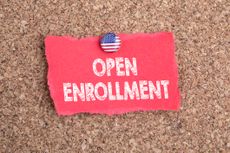What to Know About Enrolling in Medicare Part B
Sign up for Medicare Part B no later than eight months after you leave your job or you could be hit with lifetime penalties.


Question: I signed up for Medicare Part A when I turned 65, but I didn’t enroll in Part B because I was still working and had health insurance from my employer. But now I’m 68, and I plan to retire later this year. What do I need to do to enroll in Medicare Part B, and when do I need to do it?
Answer:
Many people who are still working just sign up for Medicare Part A at 65 (because it’s free) and delay signing up for Part B while they’re covered by their employer’s insurance. But you must sign up for Medicare Part B no later than eight months after you leave your job and lose that coverage, or else you could get hit with a lifetime penalty and a gap in coverage.

Sign up for Kiplinger’s Free E-Newsletters
Profit and prosper with the best of expert advice on investing, taxes, retirement, personal finance and more - straight to your e-mail.
Profit and prosper with the best of expert advice - straight to your e-mail.
You can’t sign up online because your employer needs to provide proof that until now you had coverage at work. You can submit the paperwork by mail or in person at your local Social Security office. You will need to fill out the following forms: CMS-40B Application for Enrollment in Medicare Part B and, because you worked past 65, CMS-L564 Request for Employment Information, to be filled out by your employer. If you’ve had more than one job with health coverage since you turned 65, you’ll need each employer to fill out a separate form.
It will probably take the Social Security Administration a while to process the paperwork. Tatiana Fassieux, California Health Advocates board chair, recommends mailing your application or making an appointment with Social Security at least two months before you retire to ensure that your Part B coverage begins the first month you’re officially retired. The Social Security office can also give you a letter of eligibility or enrollment so you can start looking for a medigap policy, and for a Medicare Part D prescription plan or a Medicare Advantage plan, she says.
Keep in mind that only health insurance from a current employer counts as eligible coverage for delaying Medicare sign-up. If you have retiree health coverage or if you continue your employer’s coverage through COBRA, you’ll still need to sign up for Medicare Part B within eight months of leaving your job, says Medicare advocate Sue Greeno, of the Center for Medicare Advocacy.
You can get help with the process from your local State Health Insurance Assistance Program (see the SHIP resource page for links to your state contacts). Also see the Center for Medicare Advocacy’s Eligibility & Enrollment information and the Medicare Rights Center’s Special Enrollment Period fact sheet.
Get Kiplinger Today newsletter — free
Profit and prosper with the best of Kiplinger's advice on investing, taxes, retirement, personal finance and much more. Delivered daily. Enter your email in the box and click Sign Me Up.

As the "Ask Kim" columnist for Kiplinger's Personal Finance, Lankford receives hundreds of personal finance questions from readers every month. She is the author of Rescue Your Financial Life (McGraw-Hill, 2003), The Insurance Maze: How You Can Save Money on Insurance -- and Still Get the Coverage You Need (Kaplan, 2006), Kiplinger's Ask Kim for Money Smart Solutions (Kaplan, 2007) and The Kiplinger/BBB Personal Finance Guide for Military Families. She is frequently featured as a financial expert on television and radio, including NBC's Today Show, CNN, CNBC and National Public Radio.
-
 Social Security Administration Warns of Massive Layoffs: What It Means to You
Social Security Administration Warns of Massive Layoffs: What It Means to YouThe Social Security Administration is gearing up to layoff thousands of workers. Here’s how it can impact you.
By Donna Fuscaldo Published
-
 Stock Market Today: Stocks Recover From Trump-Zelensky Slide
Stock Market Today: Stocks Recover From Trump-Zelensky SlideReports of a combative meeting between the two leaders sent stocks temporarily lower Friday afternoon.
By Karee Venema Published
-
 Laid Off With a Severance Package? Here’s How to Make a Plan
Laid Off With a Severance Package? Here’s How to Make a PlanGathering all the relevant information and staying organized is key, as is getting your financial team involved. Here are five financial planning tips to help.
By Michael Aloi, CFP® Published
-
 Medicare Costs to Go Down in 2023
Medicare Costs to Go Down in 2023Retirement Lower-than-expected spending on an expensive drug and other things means beneficiaries will pay less next year.
By Elaine Silvestrini Last updated
-
 A Medicare Surcharge That Might Surprise You If You’re Not Careful – IRMAA
A Medicare Surcharge That Might Surprise You If You’re Not Careful – IRMAAMedicare You could get hit with much higher Medicare premiums today because of something that boosted your income two years before.
By Brian Quick, CLU®, ChFC® Published
-
 Shingles Vaccines Work. But Medicare Won’t Always Cover Them.
Shingles Vaccines Work. But Medicare Won’t Always Cover Them.Medicare Traditional Medicare Part B does not cover some recommended vaccines, including shingles shots; prescription drug plans include commercially available vaccinations, but are likely to require some payments from beneficiaries.
By Elaine Silvestrini Published
-
 Rising Health Care Costs and the Impact on Soon-to-Be Retirees
Rising Health Care Costs and the Impact on Soon-to-Be Retireesretirement planning The time to plan for your health care in retirement is years before you actually retire.
By Julie Virta, CFP®, CFA, CTFA Published
-
 Medicare Part B Premium Jumps Dramatically for 2022
Medicare Part B Premium Jumps Dramatically for 2022Medicare Rising health care costs and the approval of Aduhelm, a new expensive Alzheimer's drug, were partly to blame for increases in the Part B premium and deductible.
By Jackie Stewart Published
-
 Even If You Already Have Medicare, Don’t You Dare Skip Open Enrollment
Even If You Already Have Medicare, Don’t You Dare Skip Open EnrollmentMedicare It’s the perfect time to think about what’s changed in your life and with your health care plan. After looking at these four issues, you might find there is a better option for you.
By Curt Arnold, CFF®, CPFA® Published
-
 When Is Medicare Open Enrollment?
When Is Medicare Open Enrollment?Medicare During this period each fall, you can select a new Medicare Advantage or Part D plan or switch back to original Medicare.
By Donna LeValley Last updated